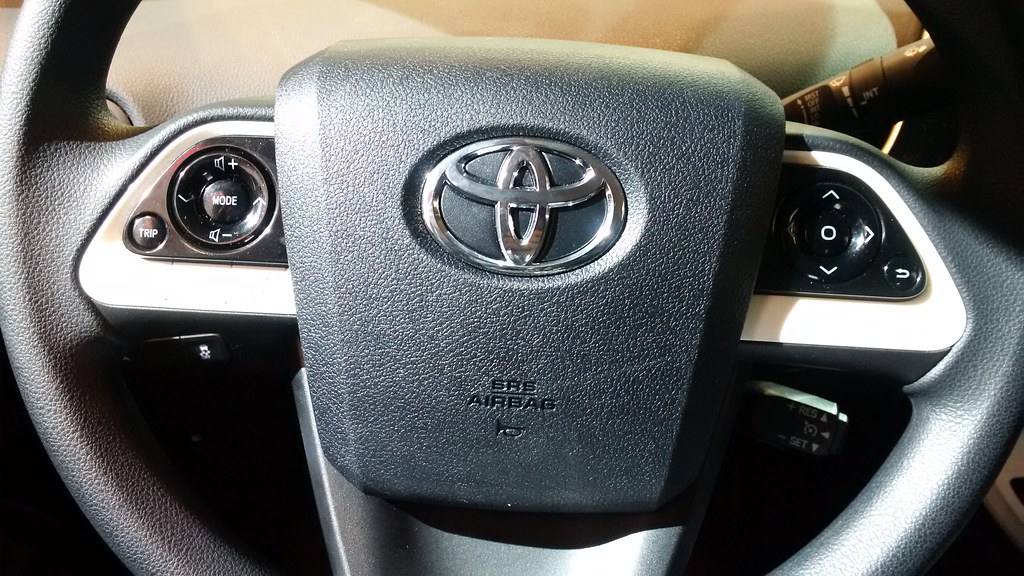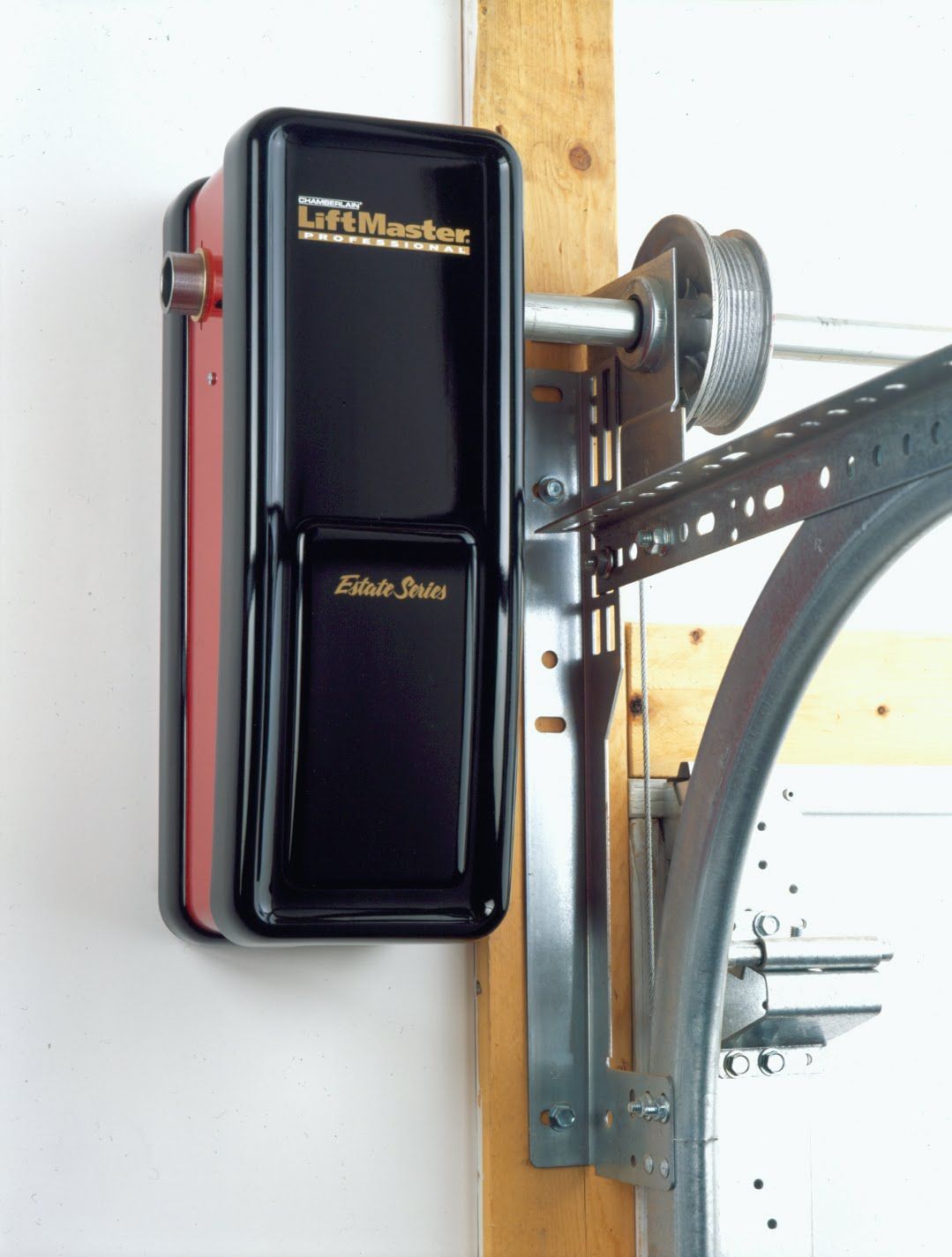
When vehicle theft comes to mind, the typical image is an entire car vanishing from its parking spot. However, a growing and lucrative threat to vehicle owners is the targeted theft of specific car parts. Thieves have discovered that removing and selling individual components on the black market can be more profitable and carry lower risk than stealing an entire vehicle. This evolving criminal strategy presents unexpected challenges for motorists, impacting their finances and peace of mind.
The economic toll of car part theft is substantial. For instance, the U.S. economy reportedly loses a staggering $1 billion annually to car battery theft alone, according to Car Bibles. The National Highway Traffic Safety Administration (NHTSA) highlights the alarming efficiency of these criminals: a skilled thief can strip a car of its major components in just half an hour. These stolen parts can then be resold for two to four times the vehicle’s original value, leaving owners with costly repairs and disabled vehicles.
To effectively counter this rising tide of crime, informed decision-making and proactive measures are essential. This comprehensive guide, drawing on insights from automotive experts and crime statistics, will detail the most valuable and frequently targeted car parts. By understanding the motivations behind these thefts, their market value, and critically, the effective protection strategies available, consumers can significantly reduce their risk. This first section will explore six key components, providing actionable knowledge to safeguard your automotive investment.

1. **Catalytic Converters**The catalytic converter is consistently identified as the top prize for car thieves, a fact frequently reported by the National Insurance Crime Bureau (NICB). These vital emissions-control devices convert toxic exhaust gases into less harmful emissions. However, their primary allure for criminals is not environmental; it is the valuable precious metals they contain, specifically rhodium, platinum, and palladium. The value of these metals surged during the COVID-19 pandemic due to supply chain disruptions, making catalytic converter theft exceptionally lucrative.
Edmunds’ 2025 calculations indicate a typical converter holds 1-2 grams of rhodium, 3-7 grams of platinum, and 2-7 grams of palladium. Rhodium alone can sell for $177-$191 per gram, with an ounce fetching over $5,300. Palladium is about $32 per gram, or $1,150 per ounce, and platinum is $900 per ounce. The ease of theft further compounds the problem; a thief can slide under a vehicle with a hacksaw and detach a converter in minutes. This quick operation, combined with a high resale value—often hundreds, if not over a thousand dollars—makes them highly desirable on the black market.
To counter this threat, automotive experts John Lin and Frank De Mulder recommend several proactive measures. Etching your Vehicle Identification Number (VIN) onto the converter can deter thieves, making the part harder to sell and easier to trace. Physical barriers like welding a metal plate over the converter or installing an anti-theft cage or strap are also effective. These measures increase the time and effort required for removal, often dissuading criminals. Additionally, parking your vehicle close to another car or a wall can restrict undercarriage access, hindering thieves.
Read more about: The Curated Canvas: Inside Ralph Lauren’s Exclusive Garage of Vintage Race Cars and Modern Exotic Hypercars

2. **Car Rims and Tires**High-end rims and tires represent another significant target for vehicle thieves, a trend observed by experts like John Lin. Their appeal lies in substantial resale value on the black market, where demand for quality wheels is strong. Aftermarket rims, in particular, can command thousands of dollars, making them highly attractive for criminals seeking quick financial gain. Their prominent visibility also makes them easy for thieves to identify and assess for value.
The vulnerability of rims and tires stems from their straightforward removal process. With basic tools like a jack and a lug wrench, a skilled thief can strip all four wheels from a vehicle in mere minutes. Frank De Mulder confirms that rims and tires are stolen “due to their high resale value,” and offers practical advice: parking your vehicle with the wheels turned at a 45-degree angle can significantly impede thieves attempting to access lug nuts, especially when parked close to a curb. This maneuver increases the difficulty of theft.
Further enhancing security, installing easily available tire locks or locking lug nuts is highly recommended. These devices add a crucial layer of protection, requiring specialized tools for removal that most thieves may not carry. Strategic parking habits also play a vital role; securing your vehicle in a garage overnight offers the highest level of protection. When street parking is necessary, choosing well-lit, populated areas, ideally with surveillance, can dissuade potential thieves.
Read more about: Remember These Days? 14 Iconic Manual Transmissions That Vanished Or Are Fading From Our Car Options

3. **Airbags**Airbags, crucial safety components, are a surprisingly lucrative target for thieves. While they retail for around $1,000 legally, stolen airbags can fetch $50 to $200 on the black market. This price difference attracts unscrupulous suppliers who install them in unsuspecting owners’ vehicles, creating severe safety risks. The National Insurance Crime Bureau (NICB) estimates 50,000 airbags, valued at $50 million, are stolen annually in the United States.
Frank De Mulder explains that airbags are prime targets because they are “a vital safety component, portable, expensive, and easily replaceable.” Their compact size facilitates easy transport, and their high replacement cost ensures a steady demand in the illicit market. Although removal typically requires breaking into the car’s cabin, experienced criminals can execute these thefts quickly, often leaving minimal signs of forced entry.
Protecting airbags involves bolstering general vehicle security. Steering wheel locks serve a dual purpose: they make stealing the entire car more difficult and act as a physical barrier, complicating airbag removal from the steering column. Consumers must also exercise extreme caution when buying replacement airbags, purchasing them solely from the original manufacturer, a certified recycler, or an authorized dealer. Verifying a sealed package is crucial to ensure the component has not been illicitly sourced.
Read more about: Seriously Where Did They Go? 15 Automotive Features That Vanished (Or Should) From Our Dashboards

4. **Car Batteries**Car batteries are frequently targeted by thieves, primarily “due to their cost and ease of removal,” as noted by Frank De Mulder. Although a single battery may not command thousands like catalytic converters, their universal applicability and speed of extraction make them a consistent target. Car Bibles reports that the U.S. economy incurs a $1 billion loss annually from battery theft alone. This problem is particularly acute for certain models, with second-generation 2004-2009 Toyota Priuses identified by Edmunds as prime targets for hybrid battery theft.
Thieves often focus on older cars lacking modern anti-theft systems, or vehicles parked in poorly lit, unsecured areas. With just basic tools, a thief can detach and remove a car battery in under a minute, securing a quick profit. Battery theft is driven by two main motivations: direct resale to generate illicit income, and personal use, where thieves opportunistically target good condition batteries to replace their own dead ones.
Several preventative measures can effectively protect your car battery. Frank De Mulder suggests using battery guards and locks, which physically secure the battery within its compartment, significantly increasing the difficulty and time required for access. Additionally, installing aftermarket hood locks can reinforce the vehicle’s security. Strategic parking in busy, well-lit areas or a secure garage further reduces vulnerability, as suspicious activity around the hood would likely attract attention.
Car Model Information: 2018 Toyota Prius Four
Name: Toyota Prius
Caption: Fifth generation Prius (XW60)
Manufacturer: Toyota
Production: December 1997 – present
ModelYears: 2001–present (US)
Class: ubl
BodyStyle: unbulleted list
Layout: unbulleted list
Sp: uk
Categories: 2000s cars, 2010s cars, 2020s cars, All-wheel-drive vehicles, All Wikipedia articles in need of updating
Summary: The Toyota Prius ( PREE-əss) (Japanese: トヨタ・プリウス, Hepburn: Toyota Puriusu) is a car produced by Toyota since 1997 over five generations. The Prius has a hybrid drivetrain, which combines an internal combustion engine and an electric motor. Initially offered as a subcompact four-door saloon, it has been produced only as a compact five-door liftback since 2003.
The Prius was developed by Toyota to be the “car for the 21st century”; it was the first mass-produced hybrid vehicle, first going on sale in Japan in 1997 at all four Toyota Japan dealership chains, and subsequently introduced worldwide in 2000.
In 2011, Toyota expanded the Prius family to include the Prius v, an MPV, and the Prius c, a subcompact hatchback. The production version of the Prius plug-in hybrid was released in 2012. The second generation of the plug-in variant, the Prius Prime, was released in the U.S. in November 2016. The Prius family totaled global cumulative sales of 6.1 million units in January 2017, representing 61% of the 10 million hybrids sold worldwide by Toyota since 1997. Toyota sells the Prius in over 90 markets, with Japan and the United States being its largest markets.
Get more information about: Toyota Prius
Buying a high-performing used car >>>
Brand: Toyota Model: Prius
Price: $18,999 Mileage: 84,118 mi.
Read more about: The Top 14 Vehicles Built to Go the Distance: Your Guide to 350,000+ Mile Reliability

5. **Tailgates**For pickup truck owners, the tailgate represents a surprisingly vulnerable and valuable target for thieves. Modern tailgates integrate advanced features like built-in cameras, electric locks, and lift-assist mechanisms. These additions, while enhancing utility, also significantly increase the tailgate’s replacement cost, making them highly desirable on the black market. Despite their apparent size, tailgates are remarkably easy for experienced thieves to remove.
Police reports confirm that criminals can open a tailgate, disconnect a few cables, and lift it off in seconds using simple tools. This rapid, often unnoticed removal process is a key factor in their appeal. Certain truck models are disproportionately targeted; Fuel Arc reports thousands of Toyota Tacoma tailgates stolen nationwide, frequently appearing for sale on platforms like Facebook Marketplace for $400 to $600. Other popular targets include Ford F-Series, Ram 1500, and Chevy Silverado.
An affordable and highly effective solution to combat tailgate theft is installing an aftermarket tailgate lock. These locks attach around the edges of the tailgate and the truck bed, creating a physical barrier that prevents detachment. Most tailgate locks can be installed within minutes using basic tools and typically cost $100 or less. Beyond physical locks, parking in secure, well-lit areas and staying informed about local theft trends can add further layers of protection.
Read more about: Beyond the Badges: 14 Low-Key Trucks That Quietly Outperformed Expectations

6. **Headlights and Taillights**Modern vehicle headlights and taillights, particularly those on luxury brands like BMW, Lexus, Porsche, and Audi, have evolved significantly. These advanced systems, often featuring High-Intensity Discharge (HID) or LED technology, are sophisticated, expensive, and consequently, highly valuable to thieves. Replacing these intricate light assemblies can cost vehicle owners hundreds, if not thousands, of dollars.
The allure of these components for criminals stems from their high resale value in the aftermarket and relative ease of removal. An experienced thief, equipped with a screwdriver and some basic knowledge, can detach these lights quickly and quietly. This efficiency often results in minimal signs of forced entry, making them an attractive target. A significant challenge is their usual lack of engraved serial numbers, which makes them difficult to trace once stolen, simplifying their resale on the black market.
To safeguard these valuable lighting systems, strategic parking is paramount. Always choosing well-lit, secure areas, such as parking garages with surveillance cameras, can deter thieves who prefer to operate under cover. While specific anti-theft devices for lights are less common, a robust overall vehicle security system is highly beneficial. A well-maintained car alarm can alert you and scare off intruders, and window tinting can obscure the interior view, making it harder for thieves to assess potential targets.
Read more about: Director’s Cut: 13 Concept Cars That Embody Steven Spielberg’s Visionary Future

7. **Infotainment Systems**Modern vehicle infotainment systems have transformed significantly, now serving as sophisticated command centers within our cars. They integrate touchscreen displays, GPS navigation, smartphone connectivity, and premium sound systems, representing a substantial financial investment. The high replacement cost of these advanced setups makes them an appealing target for opportunistic thieves seeking quick profits.
Thieves are drawn to infotainment systems primarily due to their high resale value on the black market and the relative ease of removal. With specialized tools, criminals can quickly and discreetly detach these intricate components. These stolen units are then resold online or to unscrupulous repair shops, feeding a persistent illicit demand for cheaper parts.
To protect your infotainment system, several security measures are crucial. Parking in well-lit, secure areas acts as a primary deterrent, as thieves prefer to operate unnoticed. Utilizing window tints or covers can obscure the interior view, making it harder for potential criminals to assess the value of your system. For cars with removable faceplates, always take that component with you.
A robust car alarm system also serves as a critical defense, alerting you and potentially scaring off intruders. Furthermore, avoiding leaving visible items like GPS units or phone chargers can reduce the temptation for thieves to target your vehicle in the first place. These small actions collectively enhance the security of your valuable in-car electronics.
Read more about: 14 Unlikely Automotive Heroes: The Cars That Shocked Everyone and Redefined Success

8. **Third-Row Seats**An often-overlooked target for car part thieves is the third-row seat, commonly found in SUVs and minivans. These seats, especially in modern vehicles, are designed for quick removal to allow for flexible cargo or passenger configurations. This convenience, however, becomes a significant vulnerability, as thieves exploit the easy detachment mechanism for illicit gain.
The high replacement cost of these sophisticated seats makes them valuable on the black market. Criminals can swiftly open a vehicle’s rear hatch, remove the seats in seconds, and disappear before drawing attention. Compounding the problem, these large components often lack serial tracking, making them difficult to trace once stolen and ensuring a ready market through online platforms and salvage yards.
To combat this rising trend, practical prevention strategies are advised. The LAPD, for instance, suggests using bike locks to secure the seats when they are installed in the vehicle. If the seats are not needed regularly, removing them entirely and storing them securely indoors eliminates the target from the car.
Vigilance is key, particularly when parking in long-term public lots or unsecured areas. Always ensure your vehicle’s rear hatch is securely locked. Considering additional alarm systems that monitor interior space can provide enhanced protection against these quick, unexpected thefts.
Read more about: Read This First: 14 Popular Trucks and SUVs That Become Costly Money Pits Once They Hit 80,000 Miles
9. **Wing Mirrors**Wing mirrors, or side mirrors, are surprisingly common targets for car part thieves, often underestimated by vehicle owners. Modern wing mirrors, particularly on luxury or newer models, are complex, integrating advanced electronics such as turn signal indicators, blind-spot monitoring systems, and even heating elements. Their sophistication contributes to a high replacement cost, making them lucrative for resale.
The main draw for thieves is the relative ease and speed of their removal. Often requiring only basic tools or even just force, a thief can detach a mirror in moments with minimal risk of detection. This quick operation, combined with consistent demand for replacement parts (especially for expensive OEM versions), ensures a steady black market for stolen mirrors.
To safeguard these vulnerable components, installing locking bolts or specialized security screws for wing mirrors is highly recommended. These inexpensive enhancements significantly increase the time and effort required for removal, serving as a strong deterrent against thieves who prefer easy targets. While not foolproof, these measures make your vehicle less appealing.
Beyond physical deterrents, general vehicle security practices remain crucial. Parking in well-lit, visible areas can make criminals hesitant, while a robust car alarm system can detect tampering and scare off potential intruders. Regular checks of your mirrors before and after parking can also help in quickly identifying any signs of attempted theft.
Read more about: Beyond the Battlefield: 14 Essential War Movies You Need to Experience Again and Again

10. **License Plates**License plates, while seemingly minor, are a surprisingly common target for car thieves. Criminals typically steal plates to use on unregistered vehicles, on cars involved in other crimes, or to avoid tolls and parking fines. This allows them to operate with a layer of anonymity, making it harder for law enforcement to track their illicit activities and potentially implicating the original plate owner in unforeseen legal issues.
The vulnerability of license plates stems from their simple attachment using standard screws, allowing a thief with a basic screwdriver to remove them in mere seconds. This quick, low-risk operation enables criminals to target multiple vehicles efficiently. Automotive expert Frank De Mulder specifically highlights this issue, advising proactive measures.
De Mulder strongly recommends using security screws to protect plates, noting “these screws are inexpensive and take only minutes to install.” These specialized screws require unique tools for removal, significantly increasing the difficulty and time needed by a thief, thus acting as a strong deterrent. This small investment can save vehicle owners considerable hassle.
Prompt action is essential if a plate is stolen. It is crucial to report the theft to local authorities immediately. This not only aids police investigations but also protects you from potential legal ramifications if your stolen plate is used in criminal activities. Regular checks of your plates’ security should be part of your routine vehicle inspection.
Read more about: 14 Unlikely Automotive Heroes: The Cars That Shocked Everyone and Redefined Success

11. **Garage Door Openers**A garage door opener left inside a vehicle, though not a car part, represents a significant security vulnerability that thieves actively exploit. The primary danger emerges when the stolen opener is combined with personal information inadvertently left in the car, such as registration slips or mail. This combination effectively hands criminals direct, easy access to the owner’s home.
What might start as a simple car break-in for a minor item can rapidly escalate into a serious home invasion. Thieves view a garage door opener as a silent, uncomplicated entry point, bypassing the usual security of main doors and alarms. This elevates the opener’s value immensely in the hands of a criminal, transforming vehicle theft into a direct threat to personal and home safety.
The solution to this critical vulnerability is exceptionally straightforward and requires no complex anti-theft devices. Experts universally advise one golden rule: “Never leave openers in your vehicle.” Removing the opener, especially when parking overnight or in public areas, immediately neutralizes this specific threat to your home security.
For convenience without compromising safety, consider using a keychain-style remote or a smartphone-integrated opener. These alternatives allow you to carry your opener with you, ensuring it is never left unattended in the car. This proactive approach ensures that even if your vehicle is targeted for other valuables, your home remains secure.
Read more about: Beyond the Lock: 14 Essential Home Safety Upgrades You’ll Be Grateful For

12. **Emblems and Badges**Even seemingly minor details like vehicle emblems and badges have become targets for thieves, underscoring the diverse motivations behind car part theft. While individual emblems may not fetch the high prices of major components, their distinct brand recognition and aesthetic appeal make them valuable commodities in niche markets. Thieves frequently target logos from prestigious brands such as Mercedes-Benz, BMW, and Porsche.
These stolen badges are often channeled into various illicit avenues. They can be sold as collector’s items to enthusiasts, utilized in the creation of counterfeit merchandise, or even integrated into fashion accessories, leveraging the prestige of luxury automotive brands. This varied demand ensures a steady market and decent prices for criminals, despite the emblems’ relatively low individual cost.
The ease of removal is a key factor in their appeal. Many emblems are attached with adhesive or simple clips, allowing thieves to quickly pry them off without needing specialized tools or making much noise. This low-risk, high-volume potential enables criminals to target multiple vehicles rapidly, accumulating a collection of desirable badges for resale.
Protecting emblems and badges is generally part of an overarching vehicle security strategy. Parking in well-lit, monitored areas or a secure garage can deter opportunistic thieves. A robust car alarm system, sensitive enough to detect tampering or forced entry, offers a layer of protection by alerting you to suspicious activity, making your vehicle a less attractive target.
Read more about: Seriously Where Did They Go? A Deep Dive into 14 Iconic Car Gadgets That Vanished From Our Toolboxes
As we’ve thoroughly explored, the modern landscape of vehicle theft extends far beyond entire cars disappearing. It encompasses a sophisticated, targeted approach where specific components are systematically pilfered for their high resale value and ease of extraction. From the precious metals in catalytic converters to the electronic sophistication of infotainment systems, and even the subtle brand statements of emblems, every part of your car has a potential value to a thief. Understanding these evolving tactics is your most powerful defense. By implementing proactive security measures, from simple parking adjustments and installing physical deterrents to leveraging advanced vehicle security systems like Pedal Commander®’s anti-theft feature, you can significantly reduce your vulnerability. Remember, staying informed and adopting a multi-layered protection strategy is not just about safeguarding your investment; it’s about preserving your peace of mind on the road.


